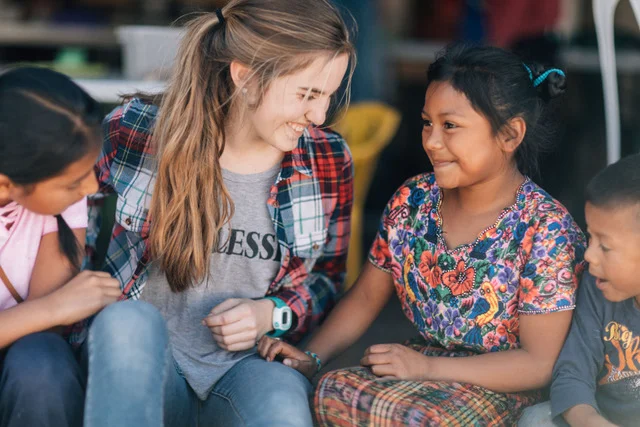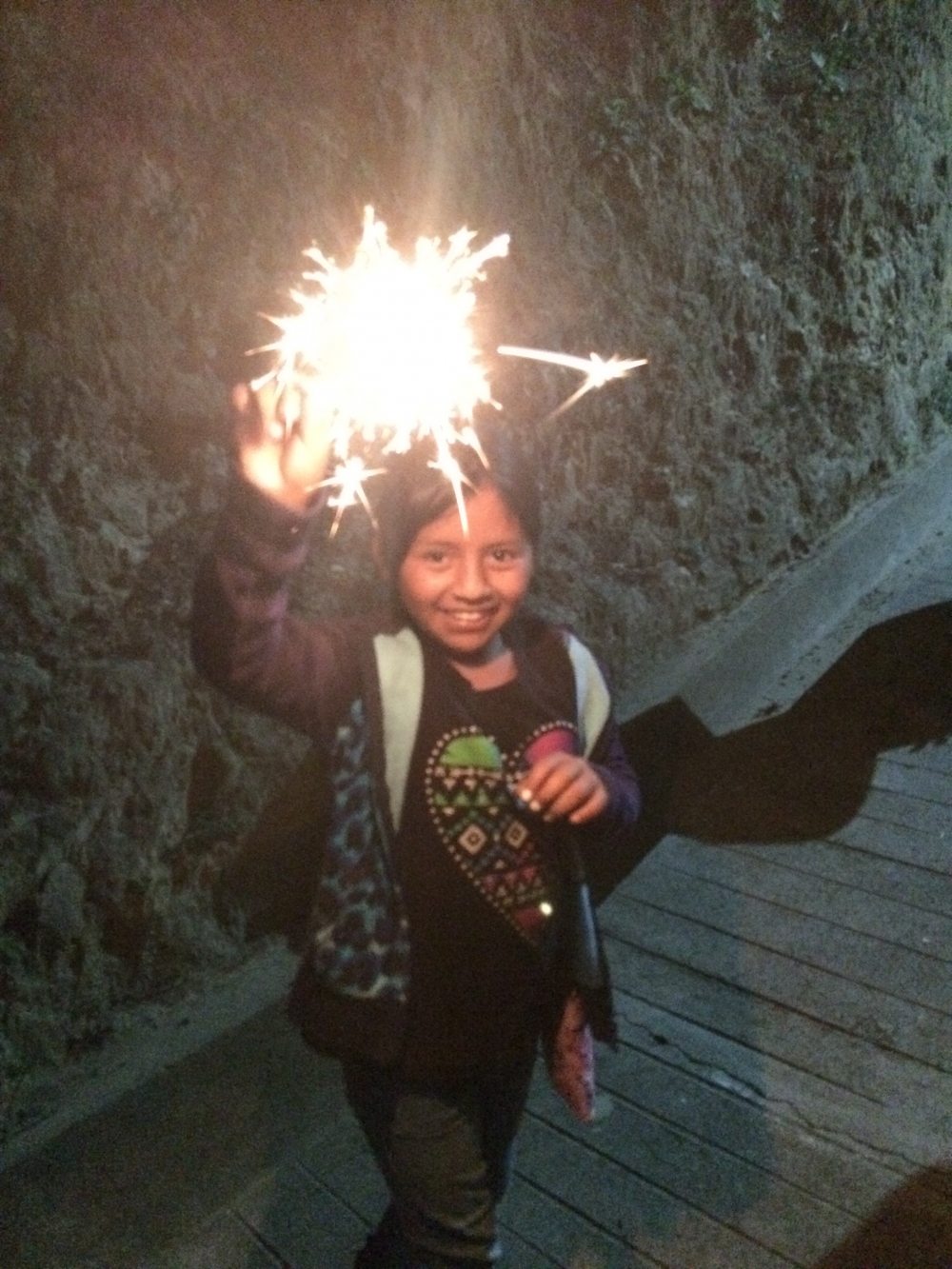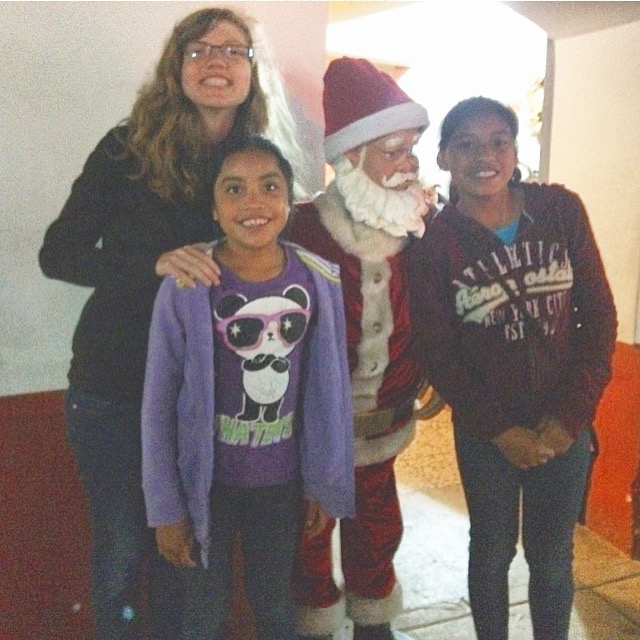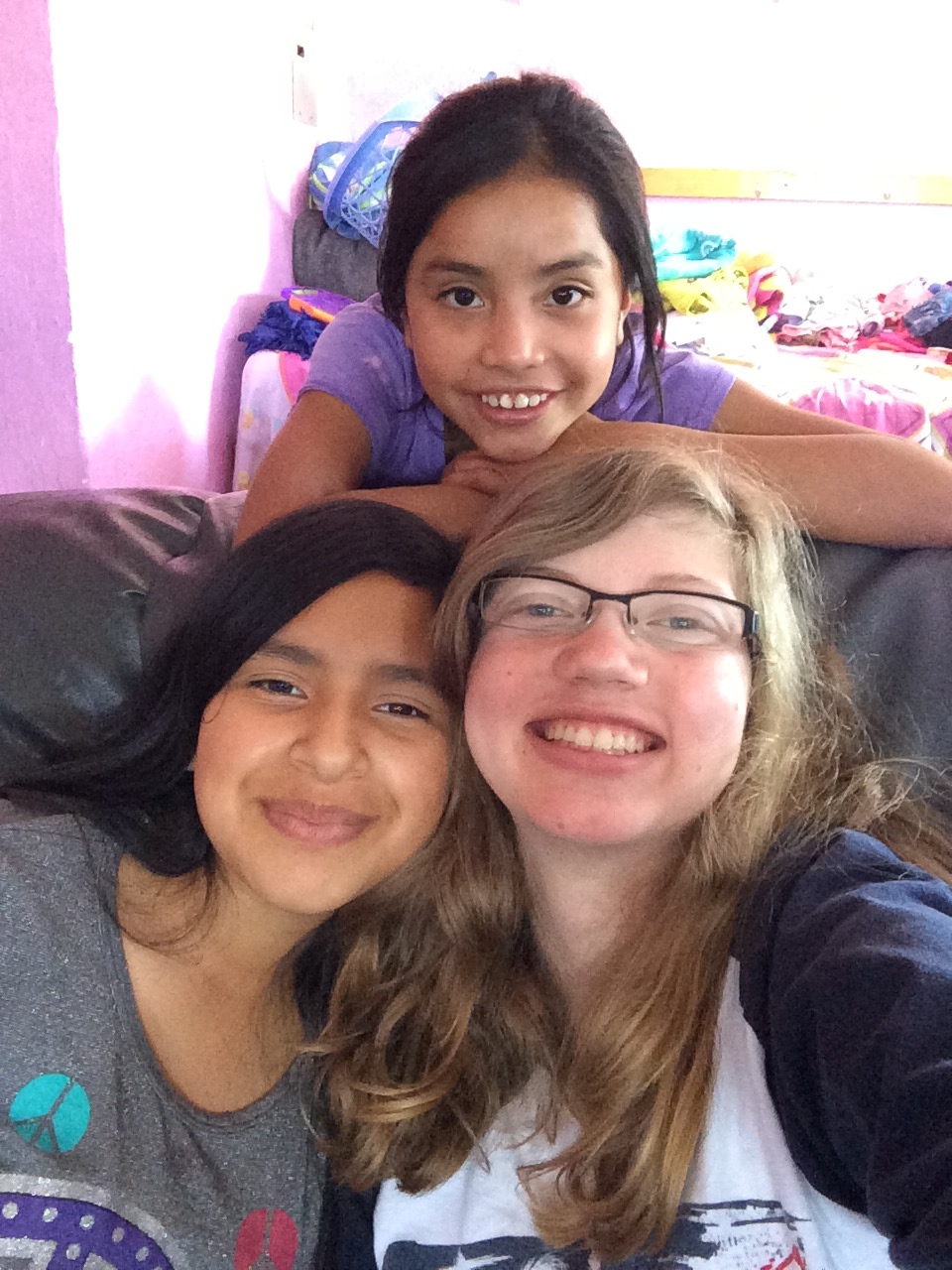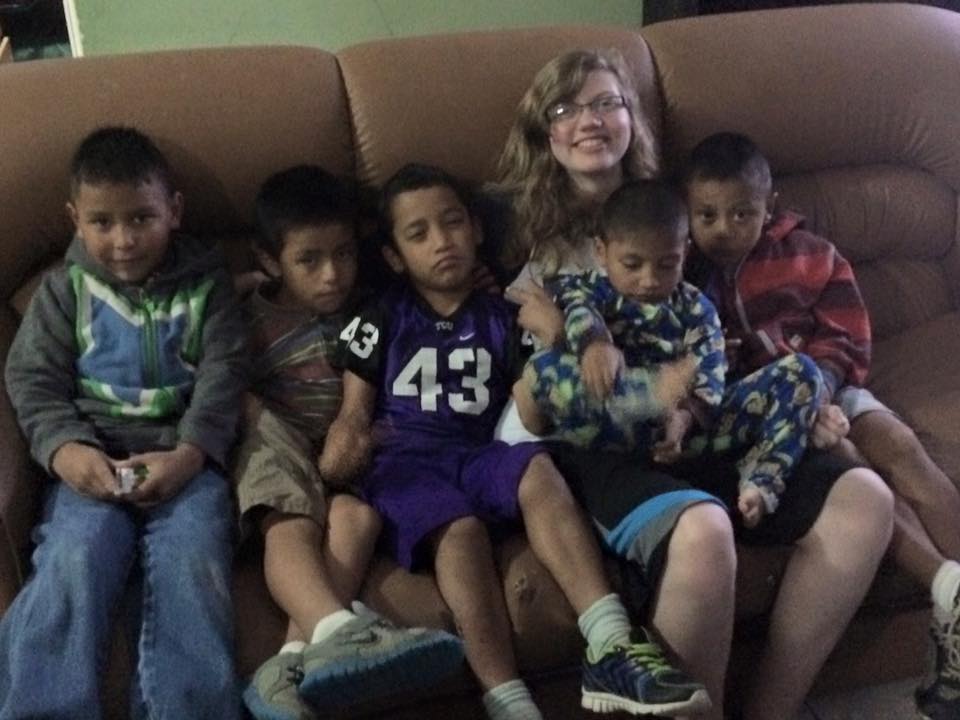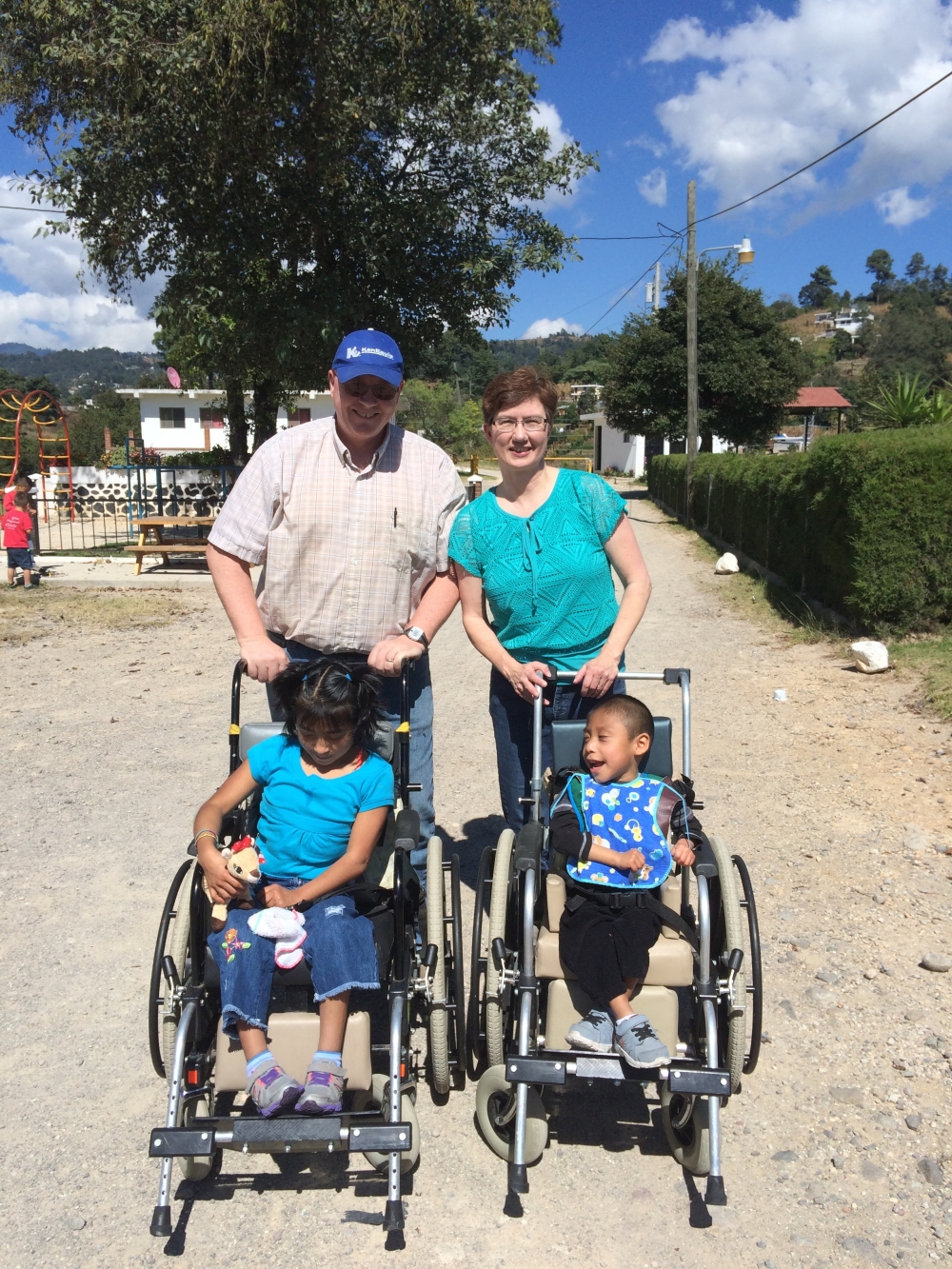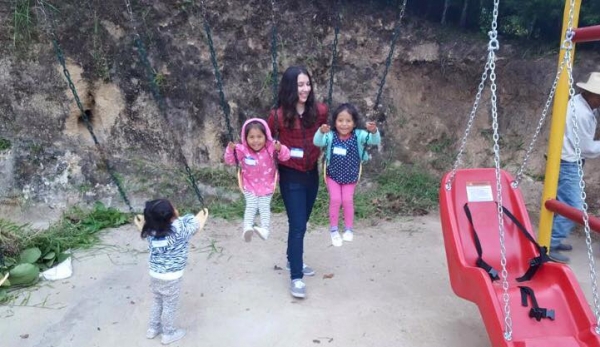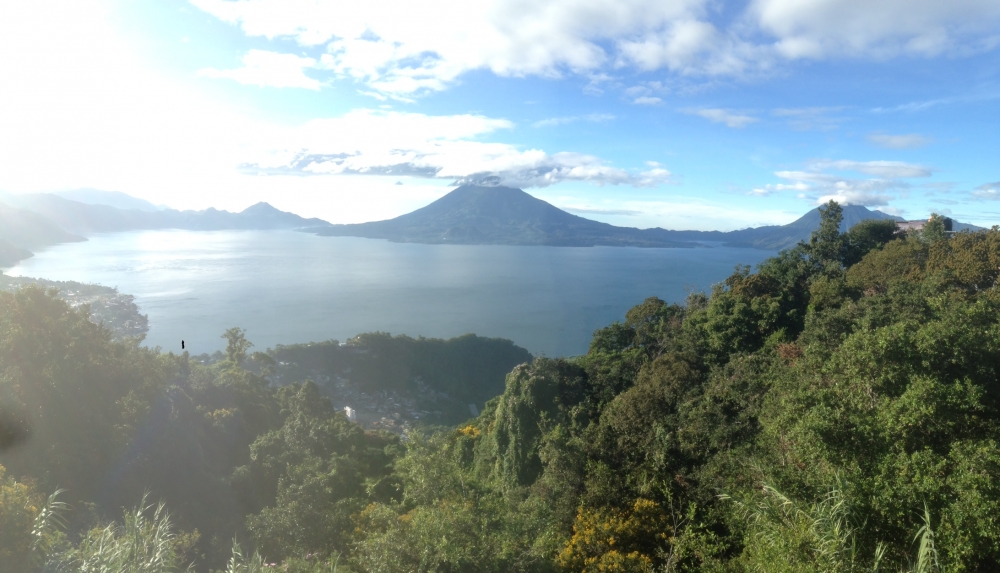Figure 1: The breathtaking view of Lake Atitlan from Eagle's Nest.
Visiting and working at EN as an individual contributor provided a totally different perspective than that of mission group member. Working mostly as Pedro’s sidekick and filling-in wherever needed, such as assisting with logistics of other visiting teams, the experience was closer to that of a staffer than a visitor, which I loved. It also gave me the chance to get to know some of the kids and staffers a bit better and appreciate their lifestyles, wants, needs, struggles and dreams.
In particular, I got to spend a lot of quality time with some of the teenagers living there, a growing age group in the children’s home that is presenting EN with some new challenges. Since EN’s inception, its main objective was to serve as a safe, temporary place for housing and educating orphaned or mistreated kids while the government and private parties worked to find more permanent circumstances for each child, such as adoption.
However, since the Guatemalan government suspended all international adoptions in 2008, EN has had to face the new reality that it will likely be the permanent home for many older aged kids until they turn 18 and go out to live on their own, which for many is a scary prospect in and of itself.
Teen Life at Eagle’s Nest
As the father of two teens, I was naturally drawn to try and understand teen life at EN, and to do a little comparing and contrasting. At some level, kids are kids, no matter where you go. All kids need and appreciate love, and some kids are good at giving it back. Kids seem to have boundless natural energy and motivation for stuff they love (like, say, soccer), while having no energy at all or perhaps boundless creativity at avoiding things they don’t (like, say, chores). And no matter where you go, teens are very clever at inventing ways of pushing rules and boundaries, especially when it comes to...let’s call it...”matters of the heart”.
Many of us adults remember teen life as an awkward time of trying to “figure things out”. Who am I? Where did I come from? Where am I going? As the adolescent brain blossoms, one gains new perspective on one’s sense of time and place in the world. I’m not a psychologist, but I can imagine for a child who has suffered mistreatment or abandonment, the teen years might be an especially painful time to reconcile those experiences and resulting scars with questions of identity and future.
For the kids at EN, though most have lived through drama and trauma few of us could ever imagine, they are at least fortunate to live in a safe and supportive environment surrounded by maternal, paternal, and familial love, in such amounts again that few of us could ever imagine. And though nothing could ever remove the sting of child maltreatment, there’s no doubt that life at EN is itself a beautiful blessing for these kids, a credit to the vision, service, and love of Larry, Claire, Pedro, and Felis.
Education and Training: The Gift of Future
As I learned more about the histories of some of the teens, I began to appreciate and think of how EN has really provided for them the priceless “Gift of Now” – a safe, loving life, here and now, that might have been denied them otherwise. And as these kids grow up, it’s equally important and apropos that EN work at providing them continued, high quality education and training they’ll need to become independent, successful adults – in short, the “Gift of Future”.
Unfortunately, due to checkered past circumstances causing them to miss school, all the teens at EN are two to three years behind where they should be, relative to US standards. These deficits are common challenges for all the EN kids, but the differences start to compound as the kids get older and have a lot of ground to make up. Further, EN’s school, Colegio Nuevo Dia (CND) only goes up to sixth grade. There are plans to try and raise money for a junior high at some point, but for now the teens have to be sent to private junior high and high schools, causing additional financial burden and logistics challenges.
And what about life beyond high school? Over dinner one night, I asked a group of four of the teen boys what they wanted to be when they grew up, I heard chef, architect, lawyer, and doctor, all of which require at least undergraduate level studies or higher. Like most kids, there is a need and a love for learning here like anywhere else.
Considering the kids’ past circumstances, it’s a wonder and a blessing to hear that they even hold such ambitions. The challenge for EN leadership and friends is to keep stoking and feeding those flames, and to find creative ways to meet those needs. There is also a lack of success stories – there are no role models for these kids to look to of others who have grown directly “up-and-out” of EN and gone on to live productive, professional lives. It just hasn’t happened before, since others were either adopted or otherwise returned to families or relatives. It really hit me that these are truly new problems EN hasn’t had to deal with until recently.
Doing My Little Part
During my visit this time, I had the great fortune and delight of finding two ways to help a few EN teens take steps along their education and training paths. Like a lot of things that happen at EN, these efforts were more fortuitous providence than the result of any preplanning. I didn’t know or expect what I would be doing when I scheduled my EN trip, but it was fun to just open my eyes and ears, read the signs, and take it from there.
“Robots”?
The first opportunity revealed itself at a meeting with school directors when I overheard mention of “the robots”. Turns out EN/CND had been donated a set of six FIRST Lego League (FLL) Mindstorms robots and a game field a few months ago by a mission group  from Community Christian Church (CCC) in Round Rock, TX, near my hometown of Austin. FLL is a Lego-sponsored annual competition for elementary and middle school student teams who build and program robots to accomplish challenges on a theme-based game field. I knew a little about FLL from both of my kids having participated in it a few years ago.
Heidi Frock from the CCC team introduced some of the CND school kids to the robots in August and gave them some orientation and training on how to program them. Unfortunately, I learned as I started poking around that momentum had waned since then and these little educational gems were just sitting on an office shelf. This is not unusual. As any well-meaning parent knows who has either participated on an FLL team or purchased one of these Mindstorms robots for their kid knows, it can take a bit of parental nudging to climb the learning curve and build the confidence necessary to get from “Ugh” to “Fun!” Also, since the CND school year runs Jan-Oct, the kids were now on vacation and there was no effort in place to continue any attention around use (or play) with the ‘bots.
When my daughter, Rachel, a high school junior, heard about it, she started pestering me about helping jumpstart their robotics efforts. Rachel is a project leader for one of her school’s Vandegrift ViperBots FTC robotics teams, as well as a veteran FLL participant. Rachel wanted to think up a way she and her team could maybe help remotely mentor the EN/CND kids as part of their community outreach efforts.
Pedro and I decided on a plan for me to work with Rosita and Diana, two 15-year-olds living at the EN children’s home, to try and pick up where Heidi left off, with the goal of building experience and competence of two student-coaches who could help train others when the new school year begins. After making my way through Spanish-language Windows and Mindstorms software—challenging enough in my native English—I got the girls fired-up and programming a ‘bot to do one of the fun field challenges: throwing a ball into a soccer net.

